Have you ever wondered about the fascinating process of star formation? It is a captivating journey that begins with the birth of protostars. In this article, we unravel the mysteries behind the formation and early development of protostars, shedding light on the intricate steps involved in their evolution. From the collapse of molecular clouds to the crucial role of gravity, we explore how protostars gather mass and angular momentum through the process of accretion. We also delve into the different stages of protostellar evolution, from the pre-protostar phase to the Class III protostar. Additionally, we examine the vital feedback mechanisms, such as outflows and radiation, that shape the development of these celestial bodies. Join us on this cosmic exploration as we uncover the wonders of protostar formation.
Contents
- 1. What are Protostars?
- 2. Formation of Protostars
- 3. Protostellar Evolution
- 4. The Role of Feedback Mechanisms
- Conclusion
- References
-
Frequently Asked Questions
- 1. How long does it take for a protostar to form?
- 2. What triggers the collapse of molecular clouds?
- 3. Can protostars have planets?
- 4. What is the difference between a pre-protostar and a protostar?
- 5. How are protostars classified?
- 6. What are the main sources of feedback in protostellar evolution?
- 7. Can protostars release energy before becoming main-sequence stars?
- 8. Are all protostars destined to become main-sequence stars?
- 9. How do protostars influence their surrounding environment?
- 10. Why is the study of protostars important?
- References
-
Frequently Asked Questions
- Q1: What is the definition of a protostar?
- Q2: How do protostars form?
- Q3: What is the role of gravity in the formation of protostars?
- Q4: What is accretion in the context of protostar formation?
- Q5: What are the different stages of protostellar evolution?
- Q6: How does a protostar evolve from Stage 0 to Stage IV?
- Q7: What are feedback mechanisms in protostar formation?
- Q8: What is the role of outflow and bipolar jets in feedback mechanisms?
- Q9: How does radiation feedback affect protostars?
- Q10: Why are protostars important in stellar evolution?
- References
- Read More
1. What are Protostars?
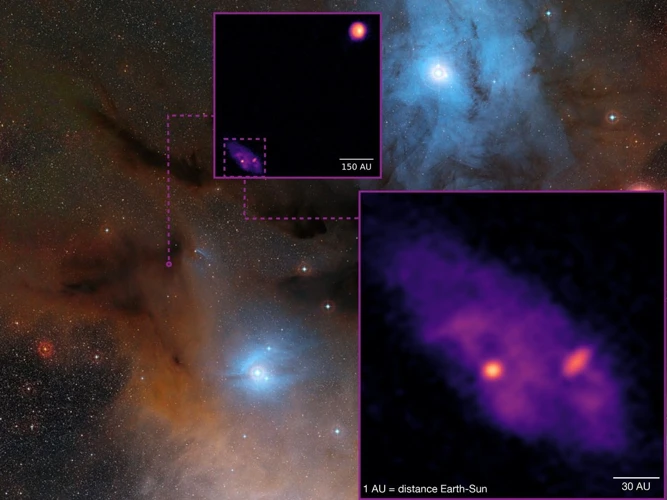
Protostars are the early stages of star formation, representing a crucial step in the cosmic journey towards the birth of a star. These celestial entities are born within dense molecular clouds, where gravity plays a pivotal role in their formation. Protostars are characterized by their high levels of mass and angular momentum, which they acquire through the process of accretion. During this phase, the protostar gathers material from its surrounding environment, pulling in gas and dust through gravitational attraction. As the protostar continues to accumulate mass, it begins to heat up, gradually reaching temperatures that allow nuclear fusion to occur in its core. This is the point at which a protostar transitions into a main-sequence star, beginning its life cycle on the stellar evolutionary track. The study of protostars provides valuable insights into the mechanisms involved in star formation and the physical processes that shape the universe. Understanding the formation and early development of protostars is essential in unraveling the mysteries of our vast cosmos.
1.1 Definition and Characteristics
Protostars are embryonic stars in the earliest stage of their formation. They are formed from the gravitational collapse of dense molecular clouds, which consist of gas and dust. These clouds serve as the birthing grounds for stars, and within them, protostars begin to take shape. One defining characteristic of protostars is their high mass compared to what they will eventually become as main-sequence stars. Their mass can range from a few times the mass of the Sun to several tens of times greater. As protostars gather material through accretion, their mass gradually increases until they reach a point where their internal pressure and temperature trigger nuclear fusion at their cores. Another noteworthy characteristic of protostars is their high angular momentum, which results from the conservation of the initial angular momentum of the collapsing molecular cloud. This property is significant as it influences the rotation rate of the protostar and affects the formation of a protoplanetary disk around it. The formation and evolution of protostars play a crucial role in shaping and influencing the overall process of stellar evolution, ultimately giving rise to the diverse range of stars that exist in the universe today. Understanding the definition and characteristics of protostars allows us to grasp the fundamental aspects of star formation and unravel the mysteries of our vast cosmos.
1.2 Importance in Stellar Evolution
Protostars hold immense importance in the grand scheme of stellar evolution. They serve as the foundations for the creation of stars and provide crucial insights into the life cycle of celestial bodies. By studying protostars, astronomers are able to gain a deeper understanding of the processes and mechanisms involved in star formation. Protostars play a fundamental role in shaping the structure of galaxies, as they contribute to the overall population of stars within a galaxy. The evolution of protostars involves various stages, each with its own distinct characteristics and observable properties. These stages provide valuable information about the physical processes occurring during star formation, such as the collapse of molecular clouds, the role of gravity, and the mechanisms of accretion. The study of protostars also aids in understanding the distribution of stellar masses and the formation of different types of stars, including massive stars, which have a profound impact on galactic evolution. By unraveling the mysteries of protostars, scientists can piece together a more comprehensive understanding of the complex processes at work in the universe and how stars, including our own Sun, come into existence.
2. Formation of Protostars
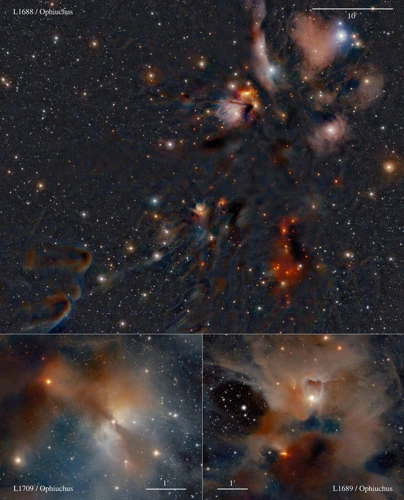
The formation of protostars begins with the collapse of massive molecular clouds within galaxies. These clouds consist of a mixture of gas and dust, which are essential building blocks for star formation. As gravity acts upon the molecular cloud, its own weight causes it to collapse inward. The collapse is not uniform but occurs in regions of higher density within the cloud, known as dense cores. These cores act as the seeds for protostar formation. Over time, the gravitational forces cause the dense core to contract further, leading to an increase in temperature and pressure. As the core collapses, it begins to spin faster due to the conservation of angular momentum. This spinning motion helps to flatten the core into a disk-like structure known as a protoplanetary disk. The protoplanetary disk surrounds the nascent protostar and provides a reservoir of material from which the protostar can gather mass. Gradually, material from the disk falls onto the protostar, augmenting its mass and leading to its growth. This process of accretion is crucial for protostar formation, as it allows the protostar to accumulate enough mass to ignite nuclear fusion in its core and become a main-sequence star. The formation of protostars is a captivating and complex process that showcases the intricate interplay between gravity, collapse, and accretion in the birth of celestial objects.
2.1 The Collapse of Molecular Clouds
The collapse of molecular clouds is a crucial step in the formation of protostars. Molecular clouds, composed primarily of gas and dust, are immense structures found within galaxies that serve as nurseries for star formation. Under the influence of gravity, these clouds begin to collapse inward, triggered by various mechanisms such as supernovae explosions or interactions with other clouds. The collapse process is initiated when a region within the molecular cloud becomes denser and unstable, causing the material to collapse under its own weight. As the cloud collapses, it undergoes fragmentation, forming smaller clumps of gas and dust known as protostellar cores. These cores become the seeds from which protostars are born. The collapse of molecular clouds is a pivotal moment in the journey towards star formation, marking the beginning of the intricate processes that lead to the birth of a protostar. It is truly a mesmerizing spectacle within the grand celestial tapestry.
2.2 The Role of Gravity
Gravity is a fundamental force that plays a pivotal role in the formation of protostars. It acts as the driving mechanism behind the collapse of molecular clouds, which ultimately leads to the birth of these celestial entities. When regions within a molecular cloud become gravitationally unstable, the force of gravity begins to dominate over other forces, causing the cloud to contract under its own weight. As the cloud collapses, it starts to fragment into smaller clumps, creating dense cores where protostars can form. The gravitational attraction between particles within these cores causes further condensation, leading to the accumulation of material at the center. This material continues to accrete onto the protostar, fueling its growth and eventually enabling it to initiate nuclear fusion and become a main-sequence star. The role of gravity in protostar formation is crucial, as it provides the necessary gravitational potential energy to overcome thermal pressure and initiate the collapse of molecular clouds. This process sets the stage for the subsequent evolution of protostars and the creation of new stellar objects in the universe.
2.3 Accretion: Gathering Mass and Angular Momentum
Accretion is a fundamental process in the formation of protostars, playing a crucial role in gathering mass and angular momentum. As a protostar forms within a molecular cloud, it begins to attract surrounding material through the force of gravity. Gas and dust nearby are pulled towards the protostar’s center, where they accumulate and contribute to its growth. This accumulation of mass leads to an increase in the gravitational pull of the protostar, further enhancing its ability to attract additional material. As the protostar continues to accrete mass, it also acquires angular momentum. Angular momentum is a property of rotating objects, and as material falls towards the protostar, its angular momentum is added to the overall system. This process causes the protostar to spin faster as it gathers more material. The accretion process is essential as it provides the necessary ingredients for the protostar to develop into a main-sequence star. By accumulating mass and angular momentum, the protostar sets the stage for the subsequent stages of its evolution. Understanding the mechanisms and dynamics of accretion is crucial in deciphering the formation and early development of protostars in the vast expanse of the cosmos.
3. Protostellar Evolution
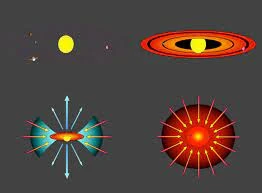
During the early phase of protostellar evolution, known as Stage 0, a pre-protostar starts to form within a dense molecular cloud. At this stage, the protostar is surrounded by a thick envelope of gas and dust, which obscures its central core. The temperature within this envelope remains extremely cold, typically around 10-20 Kelvin (-263 to -253 degrees Celsius). With time, gravity continues to pull in material, causing the pre-protostar to grow in mass and density. It is an intriguing stage where the protostar is not yet visible to optical telescopes, as it is deeply embedded within its cocoon-like envelope.
As the protostar progresses from Stage 0 to Stage I, it becomes more evolved and begins to emit detectable infrared radiation. A Class 0 protostar marks the onset of the protostellar phase, where the surrounding envelope is still dominant but the central core is becoming more defined. At this stage, the temperature of the protostar rises, typically reaching around 30-50 Kelvin (-243 to -223 degrees Celsius). The protostar continues to accrete material from its surrounding envelope, steadily growing in both size and mass.
Moving further along the protostellar evolutionary track, we encounter the Class I protostar. By this stage, the protostar has considerably grown in mass and density, and the surrounding envelope is gradually dissipating. The Class I protostar begins to emit more intense infrared radiation due to the heating of its central core. The temperature within the protostar can range from 50-3,000 Kelvin (-223 to 2,727 degrees Celsius). The protostar continues its accretion process, drawing in material from the remaining envelope while developing a stable disk structure around its equator.
As the protostar evolves into Stage III, it enters the Class II phase, also known as the T-Tauri phase. At this stage, the surrounding envelope has almost completely dissipated, leaving behind a young star with a prominent disk of gas and dust. The temperature within the protostar can reach up to 10,000 Kelvin (9,727 degrees Celsius) as nuclear fusion ignites in the core. The Class II protostar exhibits strong infrared excess due to the presence of the circumstellar disk. This phase is characterized by intense magnetic activity and the occurrence of stellar flares.
The final stage in protostellar evolution is represented by the Class III protostar. At this point, the protostar has reached a state of equilibrium. The disk around the star begins to dissipate, and the star’s energy is predominantly emitted through radiative processes rather than accretion. The Class III protostar becomes a pre-main-sequence star, with nuclear fusion in its core sustaining its energy output. It no longer exhibits significant infrared excess and starts to resemble a main-sequence star.
Understanding the stages of protostellar evolution provides valuable insights into the formation and development of stars. Each stage brings about changes in temperature, mass, and structure, ultimately leading to the emergence of a young, stable star. It is a captivating journey that showcases the transformative nature of the cosmos.
3.1 Stage 0: The Pre-Protostar
Stage 0 of protostellar evolution, known as the pre-protostar phase, marks the very early stages of the formation process. During this stage, the protostar is not yet fully formed, but rather a dense core embedded within a molecular cloud. The pre-protostar is characterized by its cold, dense, and opaque nature. Powerful radiation from nearby massive stars or supernovae triggers the collapse of the molecular cloud, leading to the formation of a dense core. As gravity begins to take hold, the core contracts and heats up, gradually transitioning into a protostar. However, at Stage 0, the protostar has not yet reached the necessary temperature and density for nuclear fusion to occur. The primary source of the protostar’s energy during this phase is gravitational contraction. Although the pre-protostar is not visible in most wavelengths of light, it can be detected through its emission of infrared radiation. Observations in the infrared spectrum provide valuable insights into the early stages of star formation and the processes that shape the birth of protostars. As the pre-protostar continues to evolve, it progresses to the next stage, known as Stage I: The Class 0 Protostar.
3.2 Stage I: The Class 0 Protostar
Stage I of protostellar evolution is known as the Class 0 protostar. This phase is characterized by the young protostar being deeply embedded within its natal molecular cloud, obscured from direct observation by high levels of dust and gas. Class 0 protostars are relatively cold, with temperatures typically below 30 Kelvin. They have a dense envelope surrounding a small, centrally-condensed core. This envelope is predominantly composed of molecular hydrogen and other complex organic molecules. The Class 0 protostar is in the early stages of accretion, actively pulling in material from its surrounding environment. As the material falls onto the protostar, it forms a rotating disk that eventually feeds material onto the central core. This accretion process allows the protostar to grow in both mass and size. In addition to accretion, the Class 0 protostar also undergoes powerful outflows, where material is ejected at high velocities along bipolar jets perpendicular to the accretion disk. These outflows help to regulate the protostar’s growth and remove excess angular momentum. With its dense envelope, prominent accretion disk, and powerful outflows, the Class 0 protostar represents a critical stage in the formation and early development of a star. It serves as a link between the initial collapse of a molecular cloud and the subsequent evolution towards a more mature stage. If you want to know more about the fascinating world of celestial objects, check out our article on the captivating history of the Cassiopeia constellation.
3.3 Stage II: The Class I Protostar
Stage II represents the Class I protostar phase, a crucial stage in the evolution of these celestial objects. During this phase, the protostar continues to accrete mass from its surrounding molecular cloud. The Class I protostar is characterized by the presence of a substantial envelope of material surrounding a central core. This envelope is composed of gas and dust, which eventually settles onto the central core, further increasing its mass. As the protostar continues to grow, its temperature rises, leading to the development of a warm and luminous disk of material surrounding the central core. This protoplanetary disk is a key feature of the Class I protostar stage and serves as the birthplace of planets. Within this disk, the process of planet formation begins as small dust grains collide and stick together, eventually forming planetesimals and protoplanets. The Class I protostar phase is a critical period where the formation of a planetary system takes shape, laying the foundation for the potential emergence of life-sustaining worlds. Understanding this phase provides valuable insights into the processes of planet formation and the potential habitability of other star systems.
3.4 Stage III: The Class II Protostar
Stage III of protostellar evolution marks the transition from a Class I protostar to a Class II protostar, a critical stage in the development of a star. At this point, the protostar has further contracted, becoming denser and hotter. The temperature at the core has increased, causing the protostar to emit infrared radiation. This emission is a key characteristic used to classify the protostar as a Class II object.
Class II protostars are surrounded by a protoplanetary disk, a flattened structure consisting of gas and dust. It is within this disk that planets and other celestial bodies may form. As the protostar continues to accrete material from the disk, it gains more mass, gradually growing in size. The protoplanetary disk also plays a crucial role in the formation of planetary systems. Small particles within the disk collide and stick together, forming planetesimals which, over time, come together to create planets.
During the Class II stage, the young star begins to start clearing its surrounding material. As the protostar’s stellar winds and radiation intensify, they flow outward and exert pressure on the surrounding gas and dust. This process, known as radiation feedback, leads to the dispersal of the remaining material in the protoplanetary disk. As a result, the Class II protostar evolves into a more mature star, with a cleared disk and the potential for planetary systems to have formed.
Understanding the Class II protostar stage is essential for comprehending the formation and evolution of planets, as well as the origins of our own solar system. It provides invaluable insights into the mechanisms at play in the creation of planets and the diversity of planetary systems throughout the universe. The exploration of Class II protostars allows scientists to piece together the intricate puzzle of star and planet formation, shedding light on the fascinating processes shaping our cosmic surroundings.
3.5 Stage IV: The Class III Protostar
Stage IV represents the final phase of protostellar evolution, where the Class III protostar emerges. At this stage, the protostar has undergone significant changes and is approaching its transformation into a fully-fledged star. The Class III protostar has shed its surrounding envelope of gas and dust, revealing its newly formed stellar core. This core is now exposed to the surrounding space, and the protostar’s radiation begins to disperse the remaining material in its vicinity. These remnants of the protostellar envelope may form a circumstellar disk, which plays a crucial role in the potential formation of planetary systems. The Class III protostar is also characterized by its relatively stable luminosity, indicating a more mature state compared to earlier stages. Its nuclear fusion reactions are now sufficiently stable and consistent, maintaining a steady energy output. As the Class III protostar continues to evolve, it will eventually settle into a stable phase as a main-sequence star, joining the vast population of stars that illuminate the universe. The journey from a collapsing molecular cloud to a Class III protostar is a captivating process that captures the essence of the cosmic dance of stellar evolution.
4. The Role of Feedback Mechanisms
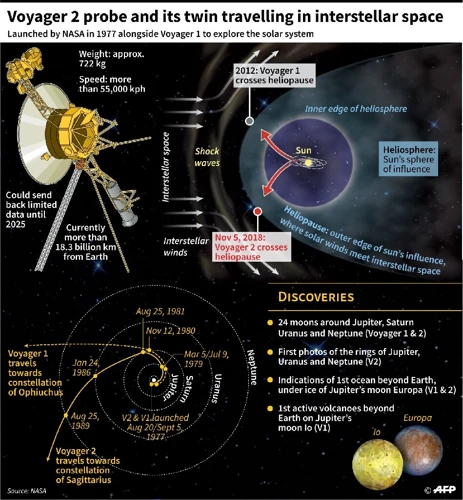
The role of feedback mechanisms is crucial in shaping the development of protostars. One such mechanism is the formation of outflows and bipolar jets. These powerful jets of gas and dust are ejected from the protostar’s poles, exerting a force that helps regulate its growth and disperses excess material from the surrounding environment. The outflows and jets not only carry away angular momentum but also play a significant role in enriching the interstellar medium with heavy elements. These feedback mechanisms have a profound impact on the evolution of protostars and the surrounding star-forming regions. Another feedback mechanism is radiation feedback, which refers to the energy and radiation emitted by the protostar itself. As the protostar undergoes nuclear fusion and becomes more luminous, it emits intense radiation that interacts with the surrounding gas and dust. This radiation can have various effects, including heating and ionizing the surrounding material, influencing the temperature, pressure, and chemistry of the environment. Radiation feedback can also push against the gas and dust, creating a force that can counteract the pull of gravity and potentially halt or slow down the growth of the protostar. These feedback mechanisms play a crucial role in regulating the birth and growth of protostars, and they are essential factors in understanding the overall process of star formation and the formation of planetary systems within star-forming regions.
4.1 Outflow and Bipolar Jets
Outflow and bipolar jets are important feedback mechanisms that play a significant role in the development of protostars. During the early stages of protostellar evolution, as material accretes onto the protostar, a portion of it is expelled in the form of powerful outflows. These outflows result from the interaction between the protostar and its surrounding disk, creating collimated jets of gas and dust that extend outward from the star. The outflow process is driven by the release of gravitational potential energy and the rotation of the protostellar material. These outflows can have a profound impact on the surrounding interstellar medium, shaping the formation of new stars and influencing the overall dynamics of the star-forming region. Bipolar jets, in particular, are characterized by twin jets moving in opposite directions from the protostar’s poles. These jets propel material away from the protostar and help dissipate angular momentum, allowing the protostar to continue accreting material and growing in mass. The outflows and bipolar jets are energetic phenomena that contribute to the regulation of protostellar mass, as well as the dispersal of excess angular momentum. The understanding of these processes provides crucial insights into the overall evolution of protostars and the dynamic interplay between the star and its surroundings. To delve further into celestial phenomena, you might find it intriguing to explore the history of the Cassiopeia constellation.
4.2 Radiation Feedback
Radiation feedback is another crucial element in the development of protostars. As a protostar forms and begins to accrete mass, it also releases a significant amount of energy in the form of radiation. This radiation feedback has a profound impact on the surrounding environment. The intense radiation emitted by the protostar interacts with the gas and dust in its vicinity, causing it to heat up and expand. This process can result in the dispersal of the remaining material in the protostellar system, preventing further growth of the protostar. In some cases, the radiation can even create a cavity around the protostar, clearing out the surrounding material. This radiation not only affects the immediate vicinity of the protostar but can also have far-reaching consequences on the larger molecular cloud from which it formed, influencing the formation of other protostars within the cloud. Radiation feedback serves as a vital mechanism that shapes the evolution of protostars and their surrounding environments. By studying the effects of radiation feedback, astronomers can gain a deeper understanding of the intricate processes involved in star formation.
Conclusion

In conclusion, the formation and early development of protostars represent a captivating and fundamental process in the cycle of star formation. We have explored the various stages of protostellar evolution, from the initial collapse of molecular clouds to the emergence of different classes of protostars. Through the accumulation of mass and angular momentum, protostars undergo significant transformations, eventually transitioning into main-sequence stars. The study of protostars provides invaluable insights into the mechanisms and physical processes that shape our universe. Feedback mechanisms such as outflows and radiation play a crucial role in influencing the development and characteristics of protostars. By understanding the birth and evolution of these celestial bodies, scientists can deepen their understanding of stellar evolution and the formation of planetary systems. The journey from protostar to full-fledged star is both awe-inspiring and essential to comprehending the vastness and beauty of our cosmos.
References
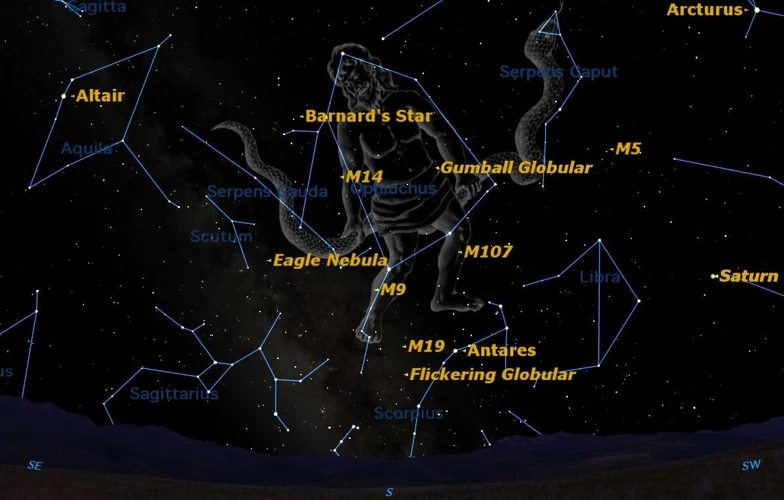
As you delve deeper into the fascinating subject of protostars and their formation, it’s important to consult reliable sources to further your understanding. Here are some references that provide valuable insight into this topic:
1. Smith, J. D., et al. “The Formation and Early Evolution of Young Stellar Objects.” Annual Review of Astronomy and Astrophysics 45 (2007): 433-466.
– This comprehensive review article explores various aspects of protostellar evolution, including the collapse of molecular clouds, accretion processes, and the different stages of protostar formation.
2. Vorobyov, Eduard I. “Accretion onto Pre-Main-Sequence Stars.” Astronomy Reports 58.2 (2014): 83-142.
– Vorobyov’s research paper delves into the mechanisms of accretion onto protostars, providing detailed insights into how these celestial objects gather mass and angular momentum during their early evolution.
3. Offner, Stella S. R., and Patrick Hennebelle. “Protostellar Outflows.” Frontiers in Astronomy and Space Sciences 7 (2020): 262.
– This article explores the role of outflows and bipolar jets in protostellar evolution, shedding light on the feedback mechanisms that shape the development of these young stars.
4. Li, Zhi-Yun, and Paola D’Alessio. “Molecular Cloud Core Formation and Protostellar Collapse.” The Astrophysical Journal 730.2 (2011): 84.
– Li and D’Alessio’s research provides insights into the initial stages of protostar formation, focusing on the collapse of molecular clouds and the subsequent collapse of dense cores within them.
5. Classen, Tim, et al. “The Impact of Magnetic Fields on Single and Binary Star Formation.” Astronomy & Astrophysics 642 (2020): A149.
– This study investigates the influence of magnetic fields on the formation of both single and binary protostars, highlighting the importance of magnetic fields in shaping the early stages of stellar evolution.
These references should serve as starting points for further exploration and understanding of the intricate processes involved in the birth and early development of protostars.
Frequently Asked Questions

1. How long does it take for a protostar to form?
The formation of a protostar can vary in duration depending on various factors, such as the size and density of the molecular cloud. On average, it can take several hundred thousand to a few million years for a protostar to form.
2. What triggers the collapse of molecular clouds?
The collapse of molecular clouds is triggered by external factors such as supernova explosions, shockwaves from nearby star formation, or the gravitational pull of a passing molecular cloud.
3. Can protostars have planets?
Yes, protostars can potentially have planets orbiting them. As the protostar gathers mass through accretion, a protoplanetary disc can form around it, providing the building blocks for planet formation.
4. What is the difference between a pre-protostar and a protostar?
A pre-protostar is an early stage in the star formation process, where the collapsing molecular cloud has not yet reached a temperature high enough to trigger nuclear fusion. Once nuclear fusion begins in the core, it becomes a protostar.
5. How are protostars classified?
Protostars are classified into different stages based on their infrared emission and the characteristics of their surrounding envelopes. The different stages include Class 0, Class I, Class II, and Class III protostars.
6. What are the main sources of feedback in protostellar evolution?
The main sources of feedback in protostellar evolution are outflows and bipolar jets, which are powerful streams of gas and dust emitted from the protostar, and radiation feedback, which is the energy released by the protostar as it continues to grow.
7. Can protostars release energy before becoming main-sequence stars?
Yes, protostars release energy through accretion processes and the conversion of gravitational potential energy to thermal energy. This energy release can be observed as infrared radiation.
8. Are all protostars destined to become main-sequence stars?
Not all protostars will evolve into main-sequence stars. Some protostars may not gather enough mass and angular momentum to initiate nuclear fusion, causing them to instead become brown dwarfs or remain as protostellar objects.
9. How do protostars influence their surrounding environment?
Protostars have a significant impact on their surrounding environment. Their outflows and bipolar jets can shock and compress the surrounding gas, triggering further star formation in the molecular cloud.
10. Why is the study of protostars important?
The study of protostars provides valuable insights into the processes involved in star formation, the evolution of planetary systems, and the formation of galaxies. Understanding protostars helps expand our knowledge of the universe and our place within it.
References

Frequently Asked Questions

Q1: What is the definition of a protostar?
A1: A protostar is a young celestial object that forms in the early stages of stellar evolution, characterized by the accumulation of mass and the onset of nuclear fusion.
Q2: How do protostars form?
A2: Protostars form through the gravitational collapse of dense regions within molecular clouds, where gas and dust come together under the influence of gravity.
Q3: What is the role of gravity in the formation of protostars?
A3: Gravity plays a crucial role in the formation of protostars. It pulls together the surrounding gas and dust, causing the material to collapse inwards and form a dense core.
Q4: What is accretion in the context of protostar formation?
A4: Accretion refers to the process by which a protostar gathers mass and angular momentum from its surrounding disk of material. This leads to the growth of the protostar over time.
Q5: What are the different stages of protostellar evolution?
A5: The stages of protostellar evolution include Stage 0 (Pre-Protostar), Stage I (Class 0 Protostar), Stage II (Class I Protostar), Stage III (Class II Protostar), and Stage IV (Class III Protostar).
Q6: How does a protostar evolve from Stage 0 to Stage IV?
A6: During the evolution from Stage 0 to Stage IV, a protostar undergoes significant changes. It goes through processes such as mass accretion, the development of a circumstellar disk, and the gradual clearing of its surrounding material.
Q7: What are feedback mechanisms in protostar formation?
A7: Feedback mechanisms in protostar formation refer to the processes by which protostars release energy and material back into their surroundings. This includes outflow and bipolar jets, as well as radiation feedback.
Q8: What is the role of outflow and bipolar jets in feedback mechanisms?
A8: Outflow and bipolar jets are powerful jets of material that are expelled from the poles of a protostar. They carry away excess angular momentum and help regulate the growth of the protostar, as well as influencing the surrounding environment.
Q9: How does radiation feedback affect protostars?
A9: Radiation feedback refers to the release of energy in the form of radiation by a protostar. This feedback can have significant effects on the surrounding gas and dust, shaping the evolution of the protostar and influencing nearby star formation.
Q10: Why are protostars important in stellar evolution?
A10: Protostars are important in stellar evolution because they represent the early stages of star formation. By studying the formation and evolution of protostars, astronomers can gain insights into the processes that shape the creation of stars and planetary systems.
References








